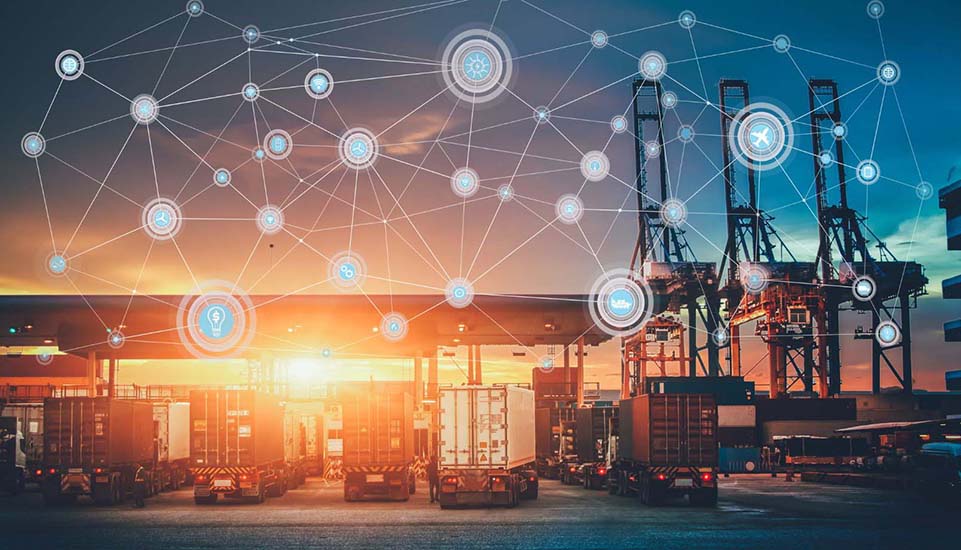In the fast-paced world of logistics, staying competitive requires the ability to manage vast amounts of data quickly and accurately. Electronic Data Interchange (EDI) has emerged as a vital tool for logistics companies, enabling seamless communication and collaboration across the supply chain. In this article, we will explore what EDI is, why it is important, how it is used in the transportation industry, how Whimsy leverages it in operations, how it contributes to sustainability, and what the future holds for this technology.
What is EDI?
Electronic Data Interchange (EDI) is the computer-to-computer exchange of business documents in a standard electronic format in many B2B partnerships. It eliminates the need for paper-based documents, manual data entry, and human intervention in exchanging information. Unlike traditional communication methods such as email or fax, EDI provides a structured and automated approach to data exchange, which improves accuracy, speed, and reliability. EDI can be transmitted in a variety of formats including ODETTE, ANSI ASC X12, EDIFACT, and many more.Why is EDI Important?
The logistics industry handles a large volume of transactions daily, involving multiple stakeholders such as suppliers, carriers, warehouses, and customers. EDI plays a critical role in streamlining these operations by:- Reducing Costs: EDI lowers transaction costs by at least 35% compared to traditional paper-based methods. By automating processes, companies can reduce expenses related to printing, mailing, and manual data entry.
- Increasing Speed and Efficiency: EDI speeds up business cycles by 61%, allowing companies to respond faster to customer demands and market changes. Automation ensures that transactions are processed in real-time, reducing delays and improving operational efficiency.
- Minimizing Errors: Manual processes are prone to errors such as data entry mistakes or lost documents. EDI reduces errors by 30-40% by ensuring data is accurately transmitted in a standardized format.
How Does the Transportation Industry Use EDI?
The transportation industry relies heavily on EDI to manage complex supply chains involving multiple parties and time-sensitive deliveries. Key applications of EDI in transportation include:- Shipment Notifications: Carriers use EDI to send advanced shipment notifications (ASN) to shippers and customers, providing real-time updates on the status and location of shipments.
- Freight Invoicing: EDI enables automated generation and transmission of freight invoices, reducing the time and effort required for billing.
- Load Tendering: Shippers use EDI to tender loads to carriers electronically, specifying the shipment details and requirements. This speeds up the process and ensures accuracy in communication.
How Does Whimsy Use EDI in Our Operations?
At Whimsy Intermodal, we understand the critical role that EDI plays in modern logistics. We have integrated EDI into our core operations to enhance communication, reduce manual workload, and provide real-time visibility to our customers. Our Transportation Management System (TMS) utilizes the ANSI ASC X12 EDI format, but can also accommodate CSV and XML file types. Here are some key ways we leverage EDI in our operations:- Real-Time Order Processing: EDI enables us to process customer orders and shipping instructions in real-time. This reduces lead times and ensures that shipments are scheduled promptly.
- Automated Billing: Our EDI system automates the generation and transmission of invoices, ensuring accuracy and speeding up the payment process. This also helps in improving our cash flow.
- Status Updates: Through EDI, we provide our customers with real-time updates on their shipments, enhancing transparency and trust.
- Partner Integration: We use EDI to seamlessly integrate with our partners, including carriers, suppliers, and warehouses. This ensures that all stakeholders are on the same page, reducing errors and improving coordination.
How Can EDI Reduce a Company’s Carbon Footprint?
One often overlooked benefit of EDI is its potential to contribute to sustainability efforts. By eliminating the need for paper-based transactions, EDI significantly reduces paper waste and the associated environmental impact. Consider these ways EDI helps reduce a company’s carbon footprint:- Reduced Paper Usage: Transitioning to EDI eliminates the need for printing purchase orders, invoices, and shipping notices, saving countless trees and reducing deforestation.
- Lower Energy Consumption: Automating data exchange reduces the energy required for manual data entry and document handling.
- Optimized Transportation: EDI enables better coordination and planning, which can lead to more efficient routing and reduced fuel consumption for shipments.
- Decreased Waste: Electronic documentation eliminates the waste associated with physical forms, envelopes, and packaging used in traditional communication methods.
What is the Future of EDI and What Might it Change/Affect in the Future?
While EDI has been around for decades, it continues to evolve with advancements in technology. The future of EDI is likely to be shaped by several trends:- Adoption of API-Based Communication: While traditional EDI relies on specific standard formats, many companies are exploring API-based data exchange, which offers greater flexibility and faster integration. In the future, hybrid models combining EDI and APIs may become the norm.
- Enhanced Data Analytics: With the growing importance of data-driven decision-making, EDI systems will likely incorporate advanced analytics capabilities. This will allow companies to gain deeper insights into their operations and make more informed decisions.
- Artificial Intelligence (AI) and Machine Learning: AI and machine learning can be used to optimize EDI processes, such as automatically identifying errors or predicting demand patterns based on historical data. This can further improve efficiency and accuracy.

